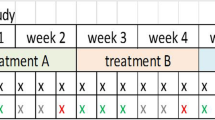Abstract
To investigate the therapeutic efficacy of sustained low-efficiency dialysis (SLED) in severe snakebite patients. Fifteen patients of severe snakebite was treated with SLED from July 2005 to August 2009 were included in the study. Central venous access was established in all patients. SLED was administered using Dialog+ dialyzer (B. Braun, Germany). SLED sessions were 6–12 h in duration at a blood flow rate of 200 ml/min and a dialysate flow rate of 300 ml/min. Heparin or low molecular weight heparin was used as anticoagulant. Biochemical indicators, APACHE II scores before and after SLED, and clinical outcomes were evaluated. The levels of serum creatinine, glutamic-oxaloacetic transaminase, glutamic-pyruvic transaminase, creatine kinase isozyme MB, and creatine kinase were significantly lower than the level before SLED (P < 0.05); the level of cholinesterase was significantly higher after SLED (P < 0.01); the APACHE II score before SLED was 14.1 ± 3.8, but decreased significantly to 7.9 ± 1.4, 6.2 ± 1.1, and 4.2 ± 0.8 on days 1, 2, and 7 after SLED, respectively (P < 0.01). Three patients died on days 1, 3, and 4 after SLED, respectively. The remaining twelve patients were either cured or showed improvement at the time of discharge. The survival rate was 80 % where as mortality was 20 %. SLED may be an effective treatment option in severe snakebite patients. It can reduce mortality, thereby, resulting in increased survival rates.
Similar content being viewed by others
References
Garg, A., Sujatha, S., Grag, J., et al. (2009). Wound infections secondary to snakebite. Journal of Infection in Developing Countries, 3, 221–223.
Indraprasit, S., & Boonpucknavig, V. (1986). Acute interstitial nephritis after a Russell’s viper snake bite. Clinical Nephrology, 25, 111.
Soe, S., Win, M. M., Htwe, T. T., et al. (1993). Renal histopathology following Russell’s viper (Vipera russelli) bite. Southeast Asian Journal of Tropical Medicine and Public Health, 24, 193–197.
Chugh, K. S., Singhal, P. C., Kher, V. K., et al. (1983). Spectrum of acute cortical necrosis in Indian patients. American Journal of the Medical Sciences, 286, 10–20.
Chugh, K. S. (1989). Snake bite induced acute renal failure in India. Kidney International, 35, 891–907.
Pinho, F. M. O., Zanetta, D. M. T., & Burdmann, E. A. (2005). Acute renal failure after Crotalus durissus snakebite. A prospective survey on 100 patients. Kidney International, 67, 659–667.
Peiris, O. A., Wimalaratne, K. D. P., & Nimalasuriya, A. (1969). Exchange transfusions in the treatment of Russell’s viper bite. Postgraduate Medical Journal, 45, 627–629.
Cobcroft, R. G., Williams, A., Cook, D., et al. (1977). Hemolytic uremic syndrome following taipan envenomation with response to plasmapheresis. Pathology, 29, 399–402.
Kanjanabuch, T., & Sitprija, V. (2008). Snakebite nephrotoxicity in Asia. Seminars in Nephrology, 28, 363–372.
Faiz, M. A., Hossain, M. R., Younus, A., et al. (1995). A hospital based survey of snake bite in Chittagong Medical College. Journal of Bangladesh College of Physicians and Surgeons, 13, 3–8.
Swaroop, S., & Grab, B. (1954). Snakebite mortality in the world. Bulletin of the World Health Organization, 10, 35–76.
White, J. (2000). Bites and stings from venomous animals: A global overview. Therapeutic Drug Monitoring, 22, 65–68.
Kasturiratne, A., Wickremasinghe, A. R., de Sliva, N., et al. (2008). The global burden of snake bite: A literature analysis and modelling based on regional estimates of envenoming and deaths. PLoS Medicine, 5, e218.
Chuqh, K. S., Pal, Y., Chakravarty, R. N., et al. (1984). Acute renal failure following poisonous snakebite. American Journal of Kidney Diseases, 4, 30–38.
Athappan, G., Balaji, W. V., Navaneethan, U., et al. (2008). Acute renal failure in snake envenomation: A large prospective study. Saudi Journal of Kidney Diseases and Transplantation, 19, 404–410.
Cher, C. D., Armuqam, A., Zhu, Y. Z., et al. (2005). Molecular basis of cardiotoxicity upon cobra envenomation. Cellular and Molecular Life Sciences, 62, 105–118.
Jha, V., & Chuqh, K. S. (2008). Community-acquired acute kidney injury in Asia. Seminars in Nephrology, 28, 330–347.
Wiwanitkit, V. (2005). Management of acute renal failure due to Russell’s viper envenomation: An analysis on the reported Thai cases. Renal Failure, 27, 801.
Baldwin, I., Bellomo, R., Naka, T., et al. (2007). A pilot randomized controlled comparison of extended daily dialysis with filtration and continuous veno-venous hemofiltration: Fluid removal and hemodynamics. International Journal of Artificial Organs, 30, 1083–1089.
Kumar, N., & Ahlawat, R. S. (2007). Extended daily dialysis in acute renal failure: A new therapeutic approach. Iranian Journal of Kidney Diseases, 1, 63–72.
Lund, B., Seifert, S. A., & Mayersohn, M. (2005). Efficacy of sustained low-efficiency dialysis in the treatment of salicylate toxicity. Nephrology, Dialysis, Transplantation, 20, 1483–1484.
Khan, E., Huggan, P., Celi, L., et al. (2008). Sustained low-efficiency dialysis with filtration (SLED-f) in the management of acute sodium valproate intoxication. Hemodialysis International, 12, 211–214.
Fiaccadori, E., Maggiore, U., Parenti, E., et al. (2008). Sustained low-efficiency dialysis (SLED) for acute lithium intoxication. NDT Plus, 1, 329–332.
Author information
Authors and Affiliations
Corresponding author
Rights and permissions
About this article
Cite this article
Cheng, J., Wang, D., Hu, S. et al. The Report of Sustained Low-Efficiency Dialysis (SLED) Treatment in Fifteen Patients of Severe Snakebite. Cell Biochem Biophys 69, 71–74 (2014). https://doi.org/10.1007/s12013-013-9768-4
Published:
Issue Date:
DOI: https://doi.org/10.1007/s12013-013-9768-4




